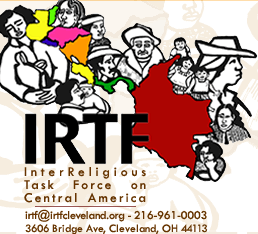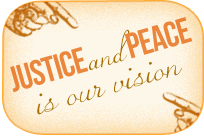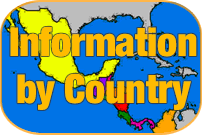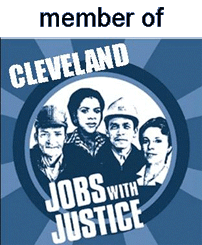Globalization & Trade
“... what's called "globalization," a term of propaganda used conventionally to refer to a certain particular form of international integration that is (not surprisingly) beneficial to its designers: Multinational corporations and the powerful states to which they are closely linked.”
-Noam Chomsky
IMF, World Bank, GATT and WTO
Since World War II, globalization has been understood as the current economic trend planned by economists, business interests, and politicians to integrate the world’s economies through a neoliberal policy. Their work led to the Bretton Woods Conference and the founding of several international institutions intended to oversee the renewed processes of globalization, promoting growth and managing adverse consequences. The International Monetary Fund (IMF) and the International Bank for Reconstruction and Development (The World Bank) were formed following the Bretton Woods conference, ostensibly in an effort to help stabilize the international economy and to provide loans to struggling nations. These institutions, which are run by member nations, spearheaded The General Agreement on Tariffs and Trade (GATT), which in 1995 became the World Trade Organization (WTO). This agreement was foundational to the neoliberal economic model that saw private businesses in the public sector and free trade agreements as an engine for economic growth.
Neoliberal economic policies have been criticized widely for the inequality they produce both within countries and between developed and developing nations (i.e., between the Global North and the Global South). Even though WTO policies impact most aspects of societies—and the planet itself—it is not a democratic, transparent institution. The WTO rules are written by and for corporations with inside access to the negotiations. For example, the US Trade Representative gets heavy input for negotiations from 17 "Industry Sector Advisory Committees.” Citizen input by consumer, environmental, human rights and labor organizations is consistently ignored. Even simple requests for information are denied, and the proceedings are held in secret.
How is International Debt involved?
In the 1960s the U.S. government had spent more money than it earned and to make up for this decided to print more dollars. So the world's stocks of dollars fell in value.
This was bad news for the major oil-producing countries (OPEC), whose oil was priced in dollars. The money they made from exports now bought less. So in 1973 they hiked their prices and limited oil supply. They made huge sums of money and deposited it in Western banks.
As interest rates plummeted, the banks were faced with an international financial crisis. They lent out the money fast, to stop the slide, and turned to developing nations (Third World), whose economies were doing well but who wanted money to maintain development and meet the rising costs of oil.
Banks lent lavishly and without much thought about how the money would be used or whether the recipients had the capacity to repay it. Governments in developing nations, for their part, were pleased to take advantage of loans at very low interest rates.
Many countries, like Mexico and Venezuela, took out loans to repay previous debts. But for others, this was the first time they had borrowed from commercial banks. Many intended to use the money to improve standards of living in their countries.
In the end, little of the money borrowed benefited the poor. Across the range, about a fifth of it went on arms, often to shore up oppressive regimes. Many governments started large-scale development projects, some of which proved of little value. All too often the money found its way into private bank accounts. The poor were the losers.
In the mid 1970s, developing countries, encouraged by the West to grow cash crops, suddenly found that they weren't getting the prices they were used to for the raw materials they sold, like copper, coffee, tea, cotton, cocoa. Too many countries—advised by the West—were producing the same crops, so prices fell.
Then interest rates began to rise, pushed further by an increase in US interest rates. Meanwhile oil prices rose again. The trap was sprung: poor countries were earning less than ever for their exports and paying more than ever on their loans and on what they needed to import. They had to borrow more money just to pay off the interest
In 1982 Mexico told its creditors it could not repay its debts. The International Monetary Fund (IMF) and World Bank stepped in with new loans under strict conditions, to help pay the interest. The IMF is a Western-dominated creditor, which in effect acts as a receiver but unlike a receiver makes short-term loans to help countries pay off other loans.
This pattern was repeated over and over in the following years as other countries found themselves in similar situations to Mexico's. But their debts continue to rise, and new loans have added to the burden.
Essentially, the poorest countries have become bankrupt.
When Mexico defaulted on its debt repayments in 1982 the whole international credit system was threatened. Mexico owed huge sums of money to banks in the US and Europe, and they didn't want to lose it. So they clubbed together and got the support of the International Monetary Fund (IMF) for a scheme to spread out or reschedule the debts.
Since then the IMF and the World Bank (the two main international financial institutions) have been involved in lending money and rescheduling debt in countries which, like Mexico, cannot pay the interest on their loans.
But their loans add to the debt burden and come with conditions. Governments have to agree to impose very strict economic programs on their countries in order to reschedule their debts or borrow more money. These programs are known as Structural Adjustment Programs (SAPs). SAPs have particularly affected the countries in Central America, whose economies are already among the poorest in the world.
SAPs consist of measures designed to help a country repay its debts by earning more hard currency—increasing exports and decreasing imports. SAPs attempt to do three things in order to free up money to pay back loans:
1- they seek reductions in state spending.
2- privatize state companies
3- prioritize exports.
In a few countries SAPs appear to have had some good effect; in most they have worsened the economic situation. In all countries applying SAPs, the poor have been hit the hardest:
- Spend less on health, education and social services - people pay for them or go without
- Devalue the national currency, lowering export earnings and increasing import costs
- Cut back on food subsidies - so prices of essentials can soar in a matter of days
- Cut jobs and wages for workers in government industries and services
- Encourage privatization of public industries, including sale to foreign investors
- Take over small subsistence farms for large-scale export crop farming instead of staple foods. So farmers are left with no land to grow their own food and few are employed on the large farms
For more information on the impacts of external debt on poor countries and the international movement to wipe away debt, visit www.jubileeusa.org
Free Trade
The promotion of “free” trade is an important part of the neoliberal economic agenda (known in poor countries as the “Washington Consensus”). This agenda is found in the passing of bi-lateral and multi-lateral trade agreements such as the North American Free Trade agreement (NAFTA), the Central American Free Trade Agreement (CAFTA), the proposed Andean Free Trade agreement (AFTA), the Colombian Free Trade Agreement (CFTA), and the ambitious Free Trade Agreement of the Americas (FTAA).
We should not be fooled by the name “free” trade agreements. The cost of “free” trade agreements is the roll back of labor rights and human rights throughout Central America and the US to continue to allow for corporate-led globalization. These agreements push more people into poverty while increasing the wealth of an elite few. These agreements give corporations and market forces control over the people and provide little or no environmental protections or worker rights.
What happens Under Free Trade Agreements?
- Agricultural policies in free trade agreements favor corporate agribusiness over independent producers in the US and Central America. Agriculture employs 60% of Guatemalans and 44% of Nicaraguans. They are negatively impacted because they cannot compete with agribusiness and United States subsidizes.
- The elimination of an effective price floor forces down market prices, allowing corporate agribusiness to sell products at prices below the cost of production (i.e., “dumping,” such as the dumping of US corn on the Mexican market, which has put Mexican farmers out of business)
- Central America is required to reduce tariffs, subsidies and other supports that protect their agriculture, allowing low-priced imports to be "dumped.”
- Intellectual property patents prohibit farmers from saving their own seeds!
- Because patents outlaw many traditional medicines, women who plant, collect fruits, oils and medicines suffer.
- Loss of employment and income in the rural sector increases poverty, especially among female-headed households.
- Food crisis: subsistence farming suffers, creating more hunger.
- Free trade agreements expand maquiladoras, which assemble foreign goods for exportation and employ mostly women aged 15-25 at low wages and under poor working conditions.
- Rural poverty pushes more women to seek maquiladora jobs in the cities (assembly-for-export factories often with sweatshop conditions)
- Free trade agreements do not require countries to meet core labor standards as established by the International Labor Organization (ILO).
- Free trade agreements do not adequately prevent countries from weakening or failing to enforce their existing labor laws, in an effort to attract investment.
- Free trade agreements prohibit common purchasing policies, such as requiring prevailing/living wages or companies that use local or union workers.
- Free trade agreements require governments to bid out their services (health, education, utilities), essentially privatizing them; so far, privatization has meant prohibitive price increases, reduced access and compromised quality.
For more information on Trade visit http://www.citizen.org/trade/
- Traffic photograph by smith on Flickr
http://www.flickr.com/photos/smith/165130409/ - Site Attributions







